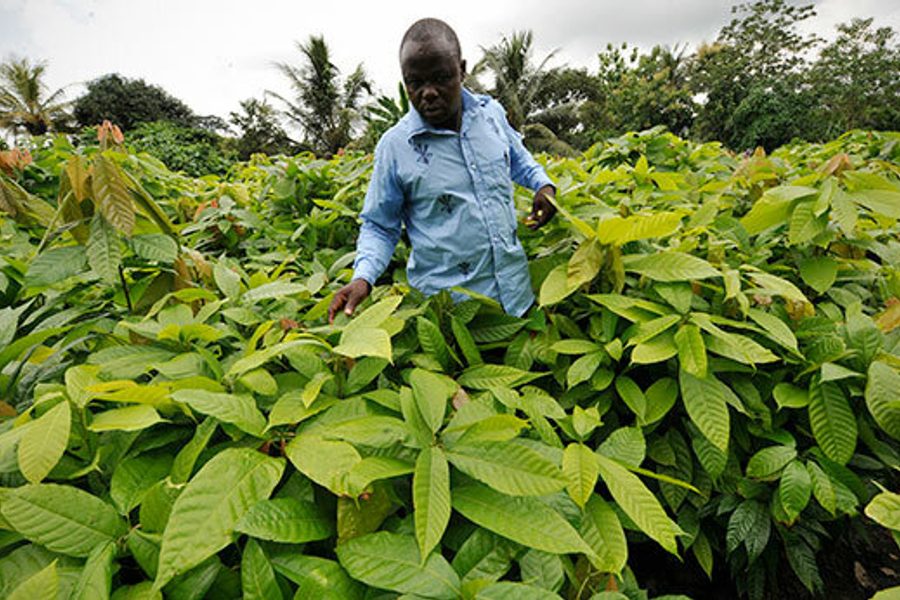
The taste of hot cocoa or a chocolate bar is one of the classic pleasures of being a kid. But chocolate is a bitter harvest for countless children in West Africa, who spend their days towing around machetes, hacking the cocoa pods that will be made into sweets for someone else’s kids.
Nestle (best known in Africa for its baby formula-peddling scandal) recently announced that it would take stronger measures to check the exploitation of child labor in cocoa farming. The company has promised to cooperate with the Fair Labor Association to monitor its supply chain, and according to its press statement, this is a first in the food industry.
But evidence of child labor has been an open secret for years in the chocolate trade. And Nestle signed a protocol a decade ago committing it to stamping out these abuses. At this point, child workers in West Africa have been waiting for this supposed breakthrough for most of their lives.
According to investigations by academic researchers and the BBC, child workers are common in the cocoa sector, pressured by poverty, or sometimes outright trafficked, into hazardous working conditions, typically at the expense of their schooling. “At the same time,” Tulane University researchers observed:
…only a very small percentage of children and their caregivers report exposure to project activities carried out by government agencies, industry and/or civil society organizations, including educational and vocational training activities, and remediation efforts, at any point in their lives.
The report called out the industry for falling far short of its targets for implementing regulatory mechanisms to ensure ethical sourcing in the supply chain. Despite plenty of corporate social responsibility lip service, as of March 2011, the industry’s efforts to implement remediation activities – voluntary programs to address the most severe forms of child labor – had yet to reach about 70 percent of cocoa growing communities in Ghana, and a startling 96 percent in Cote D’Ivoire.
The result is that in thousands of communities, each day children spend culling cocoa equals a day of lost educational opportunities, a day lost in the struggle to seed sustainable economic development.
In November, the BBC traced some of these child workers in Cote D’Ivoire’s shadowy cocoa trade:
Under the present system, once sold to market, it is impossible to trace exactly where the beans came from – and whether or not young children are being forced to work to produce them.
One of the children was Kuadio Kouako who said he was 12 and whose home was more than 320km (200 miles) away.
At first, the farm’s owner insisted that three of the boys were his sons and that two belonged to a friend. But when I asked for their names, he hesitated – then left.
“I was living in Bouake with my grandmother,” Yao Kouassi said. “But my father sent me here to work. I haven’t seen my family for three years.”
Yao’s story is depressingly familiar among children trafficked or sent away from their families and kept out of school and working for no money….
The chocolate industry has sponsored some projects such as in the village of Campement Paul, near the city of San Pedro. In 2008 a small school was built, for which the villagers had to pay half of the $20,000 (£12,570) costs.
It can accommodate about 150 children. But the villagers say that another 400 in the community still have no school to go to.
Monitoring food industry supply chains is always a sketchy affair. Even so-called fair trade labeling systems, which help companies brand premium products with an ethical badge of honor, have come under fire for loosening standards and pandering to corporate greenwashing campaigns.
For regular mass-produced food products, it’s even easier to ignore unscrupulous producers in the supply chain. But those corrupt links are fortified by multinationals that stop at nothing to keep the world distracted on a sugar high. A decade has passed since the chocolate industry vowed to change, and it may be many more years before companies are forced to truly reap the consequences of their labor practices. In the meantime they get to savor the profits of at least half a generation of stolen youth.
Michelle Chen is a contributing writer at In These Times and The Nation, a contributing editor at Dissent and a co-producer of the “Belabored” podcast. She studies history at the CUNY Graduate Center. She tweets at @meeshellchen.








